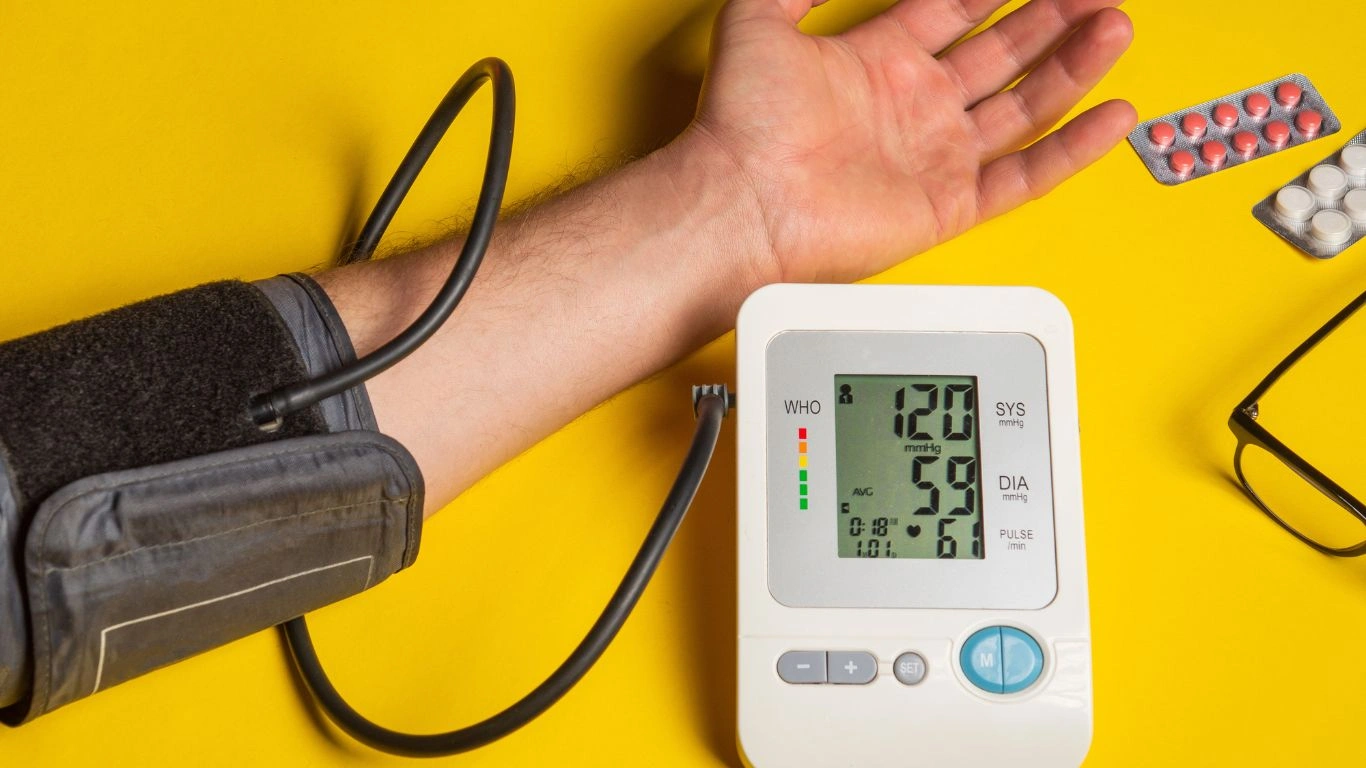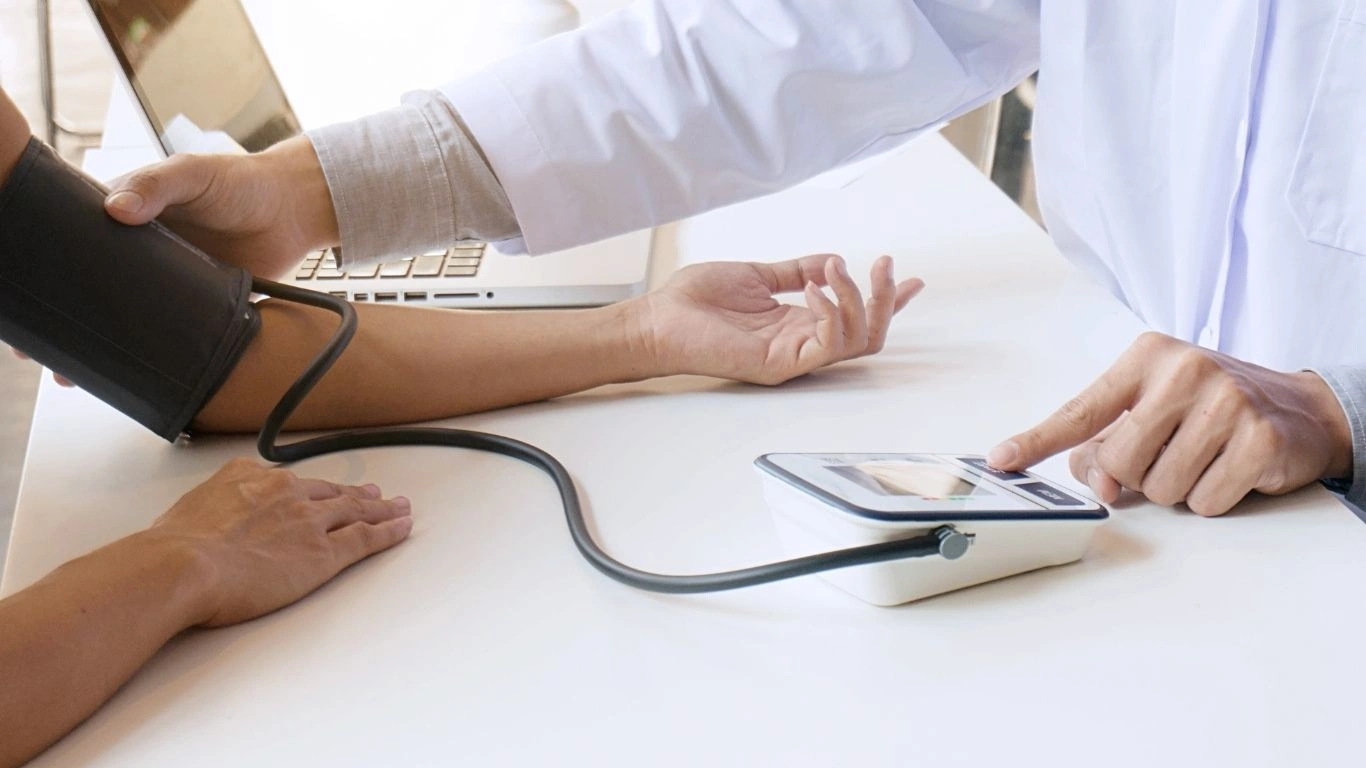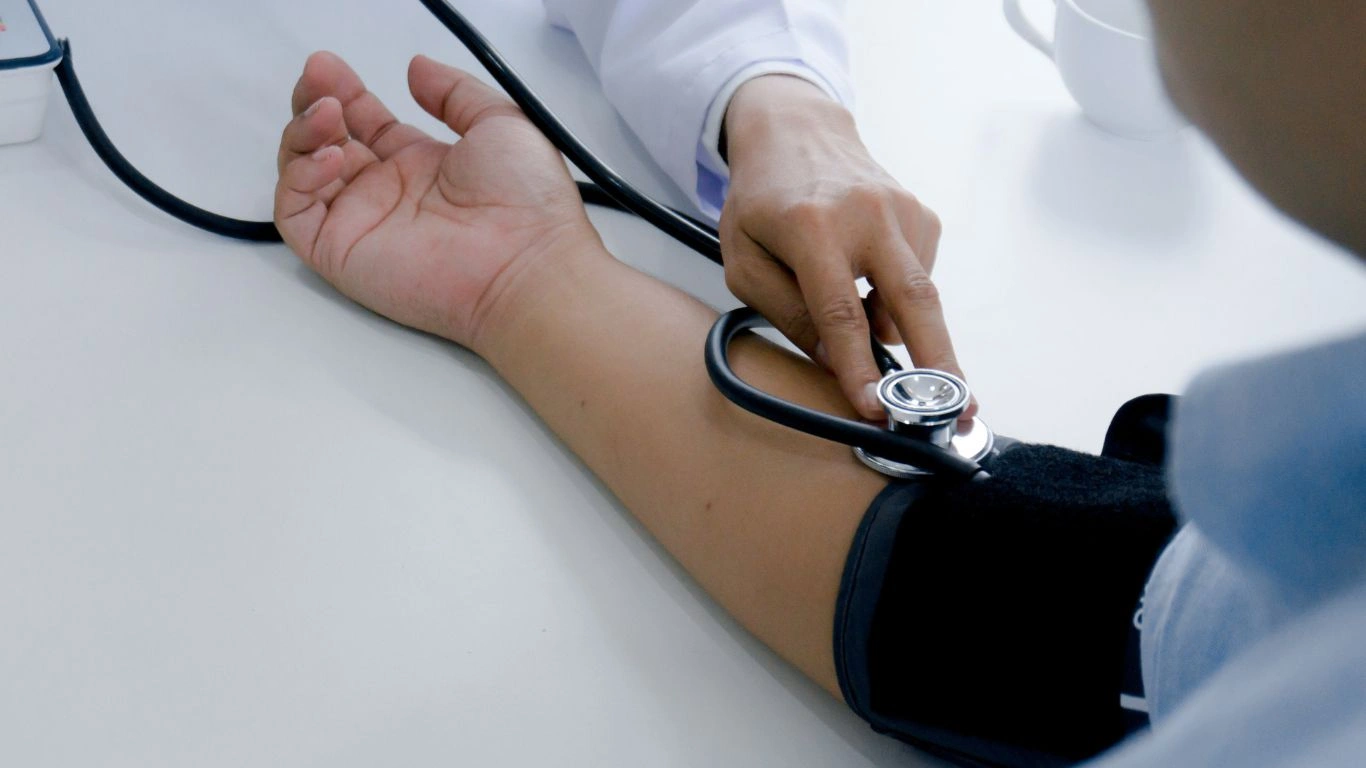The Best Salt for Hypertension: A Doctor’s Guide to Lowering Blood Pressure
As an Internal Medicine Physician with years of experience managing hypertension, I’ve come across a question that seems to pop up time and time again from my patients: “What type of salt is best for hypertension?” It’s an incredibly important question because salt plays a big role in managing blood pressure. While many people know that reducing sodium intake is key to controlling hypertension, the type of salt you choose might also have a significant impact. In this article, we’ll break down everything you need to know about salt and hypertension, and how you can make smarter, more informed choices when it comes to seasoning your meals.
The Role of Salt in Hypertension
Before diving into the types of salt, it’s important to understand why salt matters when it comes to high blood pressure. When you consume too much salt, your body retains more water to dilute the sodium, which increases the volume of blood circulating through your blood vessels. This, in turn, raises the pressure on the walls of your arteries, contributing to hypertension. So, reducing sodium intake is a primary recommendation for managing high blood pressure.

Now, it’s not just about cutting down on sodium—it’s about finding the right balance. Different types of salt have different properties, and knowing which one is best for you can help make a significant difference in how you manage your hypertension.
Understanding Sodium and Its Impact on Your Health
Salt is made up of sodium and chloride, and it’s the sodium that has the most significant effect on your health, especially in relation to hypertension. The more sodium you consume, the more your blood pressure can increase. The American Heart Association recommends limiting sodium intake to no more than 2,300 milligrams per day, which is roughly equivalent to one teaspoon of table salt. However, for those with hypertension or at risk, aiming for 1,500 milligrams per day is ideal.
The reason sodium affects blood pressure is quite simple. When you consume excess sodium, it attracts water into your bloodstream, increasing the amount of fluid your heart needs to pump, which in turn raises your blood pressure. Reducing your salt intake can help to lower this pressure, which is why I always work with my patients to figure out ways to reduce sodium without compromising the taste and satisfaction of their meals.
What Type of Salt is Best for Hypertension?
Now, let’s get to the heart of the matter: what type of salt is best for hypertension? There are a number of different salts on the market, from table salt to sea salt to Himalayan pink salt. But the real question is: do they all have the same effect on blood pressure, or is there a healthier option?
Table Salt: The Common Culprit
Table salt is the most commonly used salt, and it’s also the salt that gets the most bad press when it comes to hypertension. Table salt is highly processed and contains added chemicals like anti-caking agents to prevent clumping. Unfortunately, it also contains a high level of sodium in a concentrated form, which can contribute significantly to high blood pressure when consumed in excess.
In my practice, I often recommend that my patients reduce or avoid using table salt because it can easily sneak into your diet. Think about it: table salt is in almost everything! From packaged foods to restaurant meals, it’s hard to escape. And with such a high sodium content, it can lead to long-term health problems.
Sea Salt: A More Natural Option?
Sea salt has gained popularity in recent years, and many people believe it’s a healthier alternative to table salt. While sea salt is often touted as a more natural option (because it’s harvested from evaporated sea water), it’s important to know that its sodium content is actually very similar to table salt. However, one of the main benefits of sea salt is that it often contains trace minerals, like magnesium and potassium, which may offer some additional health benefits.
That said, sea salt isn’t a miracle worker. It still contains a lot of sodium, which means it can still raise blood pressure if consumed in large amounts. So, while it may be slightly more nutrient-dense than regular table salt, I still recommend moderation for those with hypertension.
Himalayan Pink Salt: The Trendy Choice
Himalayan pink salt is another popular alternative, known for its distinctive pink color and touted health benefits. Like sea salt, Himalayan salt is often considered a more “natural” option, as it’s less processed than table salt and retains more of its trace minerals. These minerals include magnesium, calcium, and potassium, which are thought to support various body functions.

From a sodium content perspective, though, Himalayan pink salt is very similar to both table salt and sea salt. So while the minerals in Himalayan pink salt may have some health benefits, they don’t offset the risks of consuming too much sodium. If you enjoy the flavor or color of Himalayan pink salt, feel free to use it—but remember that it should still be used sparingly if you’re managing hypertension.
Potassium-Rich Salt: A Healthier Alternative for Hypertension
If you’re really looking to make a positive change, consider switching to a potassium-rich salt. Potassium is known to counteract the effects of sodium, helping to lower blood pressure. There are specially formulated potassium-based salts available that can replace regular salt in your diet. These salts contain potassium chloride instead of sodium chloride, which means they provide the salty taste we love while offering a more balanced nutrient profile for those concerned about hypertension.
One of the key advantages of potassium-rich salt is that potassium helps balance the negative effects of sodium. As a result, it may help reduce the risk of high blood pressure, especially if you’re already on a low-sodium diet. I always recommend potassium-based salts to my patients who are looking for a healthier alternative to regular salt, as they can provide a great way to maintain flavor while protecting heart health.

While potassium-rich salts aren’t a complete replacement for other lifestyle changes (like improving your diet and exercise routine), they can certainly be a helpful addition to your toolkit for managing hypertension.
How Much Salt is Too Much for Hypertension?
One of the biggest challenges in managing hypertension is determining how much salt is too much. We all love flavor, but finding that balance between seasoning and health is crucial. In my years of working with patients, one thing I always stress is that moderation is key. It’s not necessarily about cutting out salt entirely, but about reducing the intake to a level that’s manageable for your blood pressure.
For most people with hypertension, the general recommendation is to limit sodium intake to around 1,500 milligrams per day. That might sound like a small amount, but when you start to look at the sodium content in food, it quickly adds up. A single serving of a processed snack could have 200-300 milligrams of sodium. A restaurant meal could easily exceed your daily limit without you even realizing it.
Reading Food Labels: The Hidden Sodium in Your Diet
One of the easiest ways to start reducing your sodium intake is to pay attention to food labels. I always encourage my patients to read the labels on packaged foods, even if they seem healthy. Many foods marketed as “low-fat” or “sugar-free” are packed with sodium to compensate for flavor. As a result, they can end up doing more harm than good, especially when it comes to blood pressure management.
For example, did you know that a can of soup could contain more than 1,000 milligrams of sodium? Or that deli meats, which many people consider a quick and easy source of protein, are often loaded with sodium for preservation purposes? In fact, processed meats are one of the top culprits when it comes to hidden sodium in the diet. It’s not just about the salt you add to your food—it’s about what’s already in the food you’re eating!

To make matters more complicated, sodium is sometimes disguised under different names. Terms like “monosodium glutamate (MSG)” or “sodium bicarbonate” are also forms of sodium, but they can easily slip under the radar if you’re not paying attention. As someone who has spent years helping patients manage hypertension, I always remind them to check for these hidden sources of sodium when shopping for groceries. The more informed you are, the easier it is to make healthier choices.
Practical Tips for Reducing Salt Intake
Now, I know the idea of cutting back on salt might sound daunting—especially if you’ve grown used to using it liberally. But I’ve worked with many patients who’ve successfully reduced their sodium intake without feeling like they’re sacrificing flavor or satisfaction in their meals. Here are some practical tips to help you reduce your salt intake without feeling deprived:
- Cook at home more often: When you cook at home, you have complete control over what goes into your food. You can season your meals with herbs, spices, and other flavor enhancers instead of relying on salt.
- Use salt substitutes: Potassium-based salts are a great alternative to regular salt and can help balance your blood pressure. I often recommend these to my patients who still want that salty flavor but need to cut down on sodium.
- Experiment with herbs and spices: Instead of reaching for the salt shaker, try using garlic, rosemary, thyme, or oregano to add flavor to your dishes. You’d be surprised at how much flavor you can get without any salt at all!
- Limit processed foods: As mentioned earlier, processed foods are a major source of hidden sodium. Try to limit your intake of pre-packaged meals, fast food, and snacks. Opt for fresh, whole foods whenever possible.
These simple adjustments can go a long way in managing your blood pressure and improving your overall health. Remember, it’s not about depriving yourself of flavor—it’s about making smarter choices for your health.
The Link Between Salt and Other Health Conditions
While we’ve primarily focused on hypertension so far, it’s important to recognize that salt consumption is also linked to a number of other health conditions. For example, excessive salt intake can contribute to fluid retention, which may worsen conditions like kidney disease and heart failure. By reducing salt in your diet, you’re not just improving your blood pressure; you’re also supporting your kidneys and your heart.
In fact, one of the most common issues I see in patients with hypertension is the development of other related conditions, like kidney problems or heart disease. That’s why I always take a holistic approach when working with my patients. It’s not just about focusing on one issue, but understanding how salt, diet, and lifestyle choices all play a role in overall health.

If you’re managing hypertension, it’s a good idea to work with your healthcare provider to monitor other aspects of your health, like kidney function, cholesterol levels, and heart health. By making smarter dietary choices—especially when it comes to salt—you can reduce your risk for these related conditions and improve your long-term health outcomes.
How to Make the Transition to Lower Salt Intake
Switching to a lower-salt diet may take some time, and that’s okay! It’s a gradual process, and you don’t have to make drastic changes overnight. In fact, I always recommend a slow transition so that your taste buds can adjust to less salt. Here are a few strategies to help you make that shift:
- Start with small reductions: You don’t have to cut out all salt at once. Start by reducing the amount you add to your food by just a small amount each week. Over time, you’ll find that you need less salt to enjoy your meals.
- Don’t deprive yourself: Allow yourself to enjoy flavorful, low-sodium foods. You don’t have to eat bland meals just to reduce your salt intake. There are plenty of delicious, low-sodium recipes that are full of flavor.
- Involve your family: If you cook for your family, get them involved in the process of reducing salt in your meals. It can be fun to experiment with new spices and herbs together, and it’s a great way to foster healthy eating habits for everyone in the household.
By gradually shifting your diet and incorporating these strategies, you’ll be on the path to healthier salt consumption in no time.

In the end, the key to managing hypertension is a balanced approach. It’s about finding the right balance of sodium and potassium, reducing processed food intake, and using healthier alternatives to salt. Small, consistent changes can make a big difference in your health, and that’s something I’ve seen time and time again in my practice. So take it one step at a time, and know that you’re making choices that will benefit you in the long run!
The Best Practices for Sodium Reduction: A Lifestyle Approach
As we continue our conversation about managing hypertension through smarter salt choices, it’s essential to recognize that salt reduction is not just a one-time dietary adjustment—it’s a lifestyle change. While cutting back on sodium is a key strategy, combining this with other healthy habits can maximize the benefits of your efforts. From exercise to stress management, these additional lifestyle factors play a significant role in supporting heart health and controlling blood pressure.
Exercise: An Essential Part of Blood Pressure Management
In my years of experience treating patients with hypertension, I’ve consistently found that regular physical activity is one of the most effective ways to help manage blood pressure. Exercise can help lower your blood pressure by improving your heart health, strengthening your blood vessels, and helping your body use sodium more efficiently. In fact, studies show that just 30 minutes of moderate exercise most days of the week can lower systolic blood pressure by 4-9 mmHg, which is a substantial improvement.
What I love about exercise is that it doesn’t have to be complicated. You don’t need to train for a marathon or hit the gym for hours. Simple activities like walking, cycling, or swimming can go a long way in supporting your heart health. Of course, always check with your doctor before starting any new exercise regimen—especially if you have any existing health conditions or if you’re just getting started. The goal is to find something you enjoy and can sustain long-term.

Stress Management: More Than Just Relaxation
Another often-overlooked factor in managing hypertension is stress. Chronic stress can contribute to higher blood pressure by triggering the body’s fight-or-flight response, which releases stress hormones like cortisol. Over time, elevated cortisol levels can cause an increase in heart rate and constrict blood vessels, both of which can elevate blood pressure.
As someone who works with patients day in and day out, I can say that stress management is often just as important as dietary changes. Finding ways to manage stress is not just beneficial for your mental health—it’s crucial for your physical health, too. Techniques such as meditation, yoga, deep breathing exercises, or even journaling can be incredibly helpful in reducing stress and, in turn, lowering blood pressure.
One method I often recommend to my patients is mindfulness meditation. Even just 10-15 minutes a day can make a noticeable difference in how your body reacts to stress. As someone who has practiced mindfulness myself, I can vouch for its power in improving both mental clarity and physical health.
Beyond Salt: A Heart-Healthy Diet
When it comes to managing hypertension, diet plays a central role. While salt reduction is critical, focusing on a heart-healthy diet that includes a variety of nutritious foods is just as important. I often guide my patients toward the DASH diet (Dietary Approaches to Stop Hypertension), which emphasizes the consumption of fruits, vegetables, whole grains, lean proteins, and low-fat dairy.
The DASH diet is rich in potassium, calcium, magnesium, and fiber—all of which are essential for maintaining healthy blood pressure levels. These nutrients help balance out the negative effects of sodium and support the body’s overall cardiovascular health. For instance, potassium helps relax blood vessels, which can naturally lower blood pressure. And the fiber found in fruits, vegetables, and whole grains helps lower cholesterol levels, further improving heart health.
Incorporating Heart-Healthy Foods
It’s all about making healthier choices and finding new ways to incorporate heart-healthy foods into your daily meals. Here are some foods I recommend regularly:
- Leafy greens: Vegetables like spinach, kale, and swiss chard are rich in potassium and can help lower sodium levels in the body.
- Berries: Blueberries, strawberries, and raspberries are packed with antioxidants and have been shown to have a positive effect on blood pressure.
- Beets: High in nitrates, which help relax blood vessels and improve blood flow, beets are a great addition to any heart-healthy diet.
- Oats: The soluble fiber in oats helps reduce cholesterol levels, supporting heart health in the long term.
- Fatty fish: Salmon, mackerel, and sardines are high in omega-3 fatty acids, which have been shown to lower blood pressure and reduce inflammation.
Don’t feel overwhelmed by the thought of changing your entire diet all at once. Take it one meal at a time and gradually make substitutions for more heart-healthy foods. Even small changes can have a big impact on your overall health and blood pressure.
Supplements and Their Role in Managing Hypertension
While dietary changes and lifestyle modifications are the cornerstone of managing hypertension, there are also several supplements that may help lower blood pressure. It’s important to note that supplements should never replace prescribed medications, but they can complement a healthy lifestyle.
Popular Supplements for Hypertension
Some of the most commonly used supplements for hypertension include:
- Omega-3 fatty acids: Found in fish oil, these fats have been shown to lower blood pressure by improving heart function and reducing inflammation.
- Coenzyme Q10 (CoQ10): CoQ10 is an antioxidant that may help improve blood vessel function and lower blood pressure. It’s often used by individuals with hypertension.
- Magnesium: Magnesium helps regulate blood pressure by supporting proper muscle function, including the muscles of your heart and blood vessels.
- Garlic: Garlic supplements have been shown to have a mild blood pressure-lowering effect, particularly in people with high blood pressure.
Before starting any new supplements, I always advise my patients to discuss them with their healthcare provider to ensure they are safe and appropriate for their individual health needs. Some supplements may interact with medications or have side effects, so it’s always best to approach supplementation with caution and knowledge.
Important Disclaimer
While the information provided in this article is based on my personal experience as a healthcare professional and the current scientific understanding of hypertension, it is important to remember that everyone’s health needs are unique. Always consult with your physician or a healthcare provider before making any significant changes to your diet, exercise routine, or medication regimen. This article is not intended to diagnose, treat, or cure any medical condition, and the recommendations are general guidelines that may not be suitable for everyone.
For more information on hypertension and heart health, you can visit reliable resources such as Health.com and National Institutes of Health (NIH).
Ultimately, managing hypertension is a multifaceted process that involves making informed decisions about diet, lifestyle, and, when necessary, medications. With the right approach, it’s entirely possible to take control of your health and lead a vibrant, active life.

Dr. Gwenna Aazee is a board-certified Internal Medicine Physician with a special focus on hypertension management, chronic disease prevention, and patient education. With years of experience in both clinical practice and medical writing, she’s passionate about turning evidence-based medicine into accessible, actionable advice. Through her work at Healthusias.com, Dr. Aazee empowers readers to take charge of their health with confidence and clarity. Off the clock, she enjoys deep dives into nutrition research, long walks with her rescue pup, and simplifying medical jargon one article at a time.






